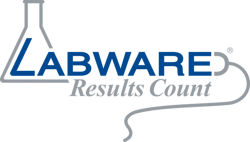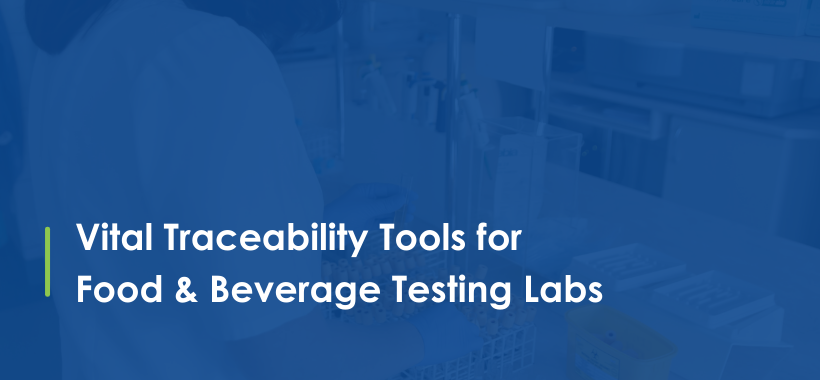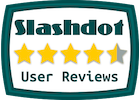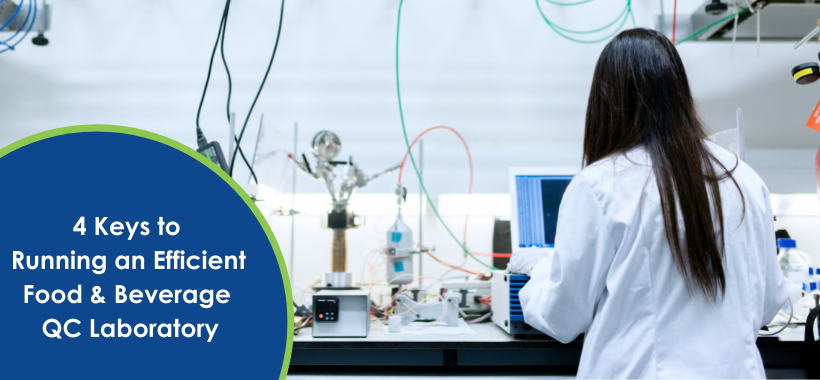
An efficient QC laboratory is crucial for maintaining quality and credibility in laboratory medicine. As the sector progresses, it is imperative to simplify activities, embrace cutting-edge technologies, and cultivate a spirit of cooperation inside clinical labs. In this blog post, we will delve into key strategies that can help you transform your lab into an efficient QC powerhouse.
We will explore how streamlining workflow processes through continuous improvement programs and lean principles can significantly enhance productivity in sample handling and analysis. Furthermore, we'll discuss the critical role played by Laboratory Information Management Systems (LIMS) in integrating various software tools used within the lab environment.
Reliable testing methods are paramount for any efficient QC laboratory; thus, we'll highlight the importance of method validation and achieving ISO 17025 accreditation. Lastly, effective communication and collaboration among teams contribute to overall efficiency – learn how creating a transparent culture and utilizing technology can bolster information sharing between departments.
Streamlining Workflow Processes
An efficient QC laboratory must streamline its workflow processes to ensure that product testing is done accurately and quickly. This involves organizing workshops, seminars, and training programs for staff members to keep them updated on the latest industry standards, technologies, and best practices. Investing in personnel growth can help maintain a high level of quality assurance while at the same time boosting productivity.
Implementing a Continuous Improvement Program for Lab Processes
A continuous improvement program focuses on identifying areas where your lab can improve efficiency or effectiveness. This may include optimizing sample handling procedures or adopting new analytical techniques. The Kaizen approach is a well-known system that concentrates on slight modifications which, over time, result in major enhancements to performance.
- Establish clear goals for each process improvement initiative.
- Identify key performance indicators (KPIs) to measure progress towards these goals.
- Create cross-functional teams responsible for implementing improvements and monitoring their impact on KPIs.
- Regularly review progress with management and adjust strategies as needed based on results achieved so far.
Adopting Lean Principles in Sample Handling & Analysis
Lean principles, originally developed by Toyota Motor Corporation, aim at reducing waste while maximizing value creation within an organization's operations - this includes laboratories too. Implementing lean methodologies within your QC lab can help minimize errors during sample preparation; increase throughput rates through streamlined workflows; reduce turnaround times overall leading towards better customer satisfaction levels ultimately benefiting both parties involved (you AND them).
- Map out your current lab processes and identify areas of waste or inefficiency.
- Standardize procedures to ensure consistency across all team members, reducing the likelihood of errors.
- Implement a "pull" system for sample processing, where samples are only processed when there is capacity available in the workflow. This helps prevent bottlenecks and ensures resources are used efficiently.
- Evaluate new technologies that can improve efficiency, such as automated sample preparation systems or advanced analytical instruments capable of providing faster results without sacrificing accuracy.
Incorporating these strategies into your QC laboratory's operations will not only enhance productivity but also contribute towards maintaining laboratory quality control standards necessary within today's competitive marketplace environment. By streamlining workflows through continuous improvement programs, adopting lean principles, and implementing state-of-the-art technology solutions, and investing heavily in employee training and development initiatives, you'll be well-equipped to handle increasing demands placed upon QC labs while still delivering top-notch services clients expect from an industry-leading provider like LabWare.
By streamlining workflow processes, laboratories can achieve greater efficiency and accuracy in their operations. Leveraging a Laboratory Information Management System (LIMS) is an effective way to further improve laboratory performance.
Key Takeaway: An efficient QC laboratory must streamline its workflow processes through employee development, continuous improvement programs, and adopting lean principles. By identifying areas of waste or inefficiency, standardizing procedures, implementing a "pull" system for sample processing and evaluating new technologies can help minimize errors during sample preparation; increase throughput rates through streamlined workflows ultimately leading towards better customer satisfaction levels.
Laboratory Information Management System (LIMS)
Scaling your company's growth without wasting time or resources is crucial in today's competitive market. To maximize growth potential, a LIMS should be employed in your QC lab to ensure streamlined data management and compliance with regulatory standards. A LIMS allows you to manage data efficiently while ensuring compliance with regulatory requirements, ultimately improving the overall efficiency of your laboratory processes.
With a LIMS in place, labs can automate routine tasks such as sample tracking, report generation, inventory management, and quality assurance procedures. This could help minimize potential mistakes, thus protecting the quality of products and client satisfaction.
Key Features of an Effective LIMS System
- Data management: An effective LIMS should offer robust data management capabilities for storing, retrieving, and analyzing large volumes of information related to samples and tests performed within the lab environment. This includes features like centralized databases for easy access across departments (LabWare, for example).
- Automation: Automating repetitive tasks like sample registration or result entry helps eliminate manual errors and streamlines workflow processes. Look for a system that supports automation through integration with instruments used in the lab as well as barcode scanning functionality.
- User-friendly interface: The ease-of-use factor plays a significant role when choosing a suitable LIMS solution since it directly impacts user adoption rates among staff members who may have varying levels of technical expertise. Opting for systems featuring intuitive interfaces ensures smooth onboarding experiences leading to better utilization rates over time.
- Flexibility & customization: Since every laboratory has unique needs based on their specific industry and operational requirements, a one-size-fits-all approach to LIMS implementation may not be the most effective. Choose a system that allows for customization of features and workflows to meet your lab's specific needs.
- Compliance & security: Compliance with regulatory standards such as ISO/IEC 17025, FDA, or CLIA is crucial for maintaining credibility in laboratory medicine and clinical laboratories. A good LIMS should have built-in compliance tools that facilitate adherence to these regulations while also ensuring data security through encryption and access control mechanisms.
Integrating LIMS with Other Software Tools Used in the Lab
In addition to its core functionalities, an efficient LIMS should integrate seamlessly with other software tools used within the QC laboratory environment. This integration can help streamline workflow processes further by eliminating redundant tasks or reducing manual data entry efforts across multiple platforms.
Some common integrations include:
- Laboratory instruments: Direct integration between your LIMS solution and analytical instruments (such as spectrometers or chromatographs) enables automatic transfer of test results into the system without any manual intervention required on behalf of lab staff members.
- Enterprise Resource Planning (ERP) systems: Integrating your LIMS with ERP software like SAP ensures seamless information flow between departments involved in product development, manufacturing, quality assurance, sales, etc., thereby improving overall organizational efficiency.
- Data analysis & reporting tools: By connecting your LIMS to data analysis and reporting software such as Microsoft Excel or Tableau, you can generate comprehensive reports that help in making informed decisions based on real-time insights into laboratory operations.
By implementing a Laboratory Information Management System (LIMS) in your QC lab, you can streamline workflow processes, improve data management capabilities, and ensure compliance with industry regulations. This can aid in boosting the efficacy of your lab and also has a major role to play in upholding quality control throughout product design and fabrication.
Laboratory Information Management Systems (LIMS) provide a comprehensive and efficient solution to the laboratory's data management needs. To ensure reliable testing methods, it is important to focus on method validation and ISO 17025 accreditation for greater credibility.
Key Takeaway: Implementing a Laboratory Information Management System (LIMS) in your QC lab can streamline workflow processes, improve data management capabilities, and ensure compliance with industry regulations. Key features of an effective LIMS system include robust data management, automation of repetitive tasks, user-friendly interface, flexibility & customization options and built-in compliance tools for regulatory standards. Integrating LIMS with other software tools used in the lab such as laboratory instruments or ERP systems can further enhance organizational efficiency.
Ensuring Reliable Testing Methods
The reliability of your QC laboratory directly impacts customer satisfaction. To avoid defective products reaching consumers who may then spread negative feedback about their experience with your brand, it's essential to use reliable testing methods that comply with industry regulations. Regularly evaluate these methods by conducting internal audits or seeking external accreditation from recognized bodies such as ISO 17025.
Importance of Method Validation in Maintaining Accuracy
In the world of laboratory medicine, method validation is a critical process for ensuring accurate and consistent results across various tests performed within the lab. This involves verifying that a specific analytical procedure can produce precise, reproducible outcomes under defined conditions.
- Precision: The ability to obtain similar results when repeating an analysis multiple times under identical conditions.
- Accuracy: How close the measured value is to its true value.
- Selectivity: The capacity to differentiate between analytes present in complex mixtures without interference from other components.
- Sensitivity: The lowest concentration level at which an analyte can be detected reliably using a particular method.
To maintain accuracy and ensure ongoing compliance with regulatory requirements, labs should perform regular validations on all testing methods employed within their facilities. Additionally, new equipment or changes in procedures should also prompt revalidation efforts to guarantee continued precision and accuracy in test results - ultimately protecting both customers' interests and your company's reputation as a trusted provider of high-quality goods/services.
Achieving ISO 17025 Accreditation for Enhanced Credibility
One way to demonstrate your commitment to maintaining quality in clinical laboratories is by achieving ISO 17025 accreditation. This internationally recognized standard specifies the general requirements for competence, impartiality, and consistent operation of testing and calibration labs. By obtaining this certification, you can showcase your lab's dedication to excellence while also ensuring compliance with industry regulations.
- Management Requirements: These encompass organizational structure, document control systems, contract reviews, purchasing services/supplies management (including subcontracting), customer feedback/complaints handling processes as well overall continual improvement initiatives aimed at enhancing performance over time.
- Technical Requirements: Cover aspects such as personnel qualifications/training programs; equipment maintenance/calibration procedures plus environmental conditions monitoring within workspaces where tests are being conducted - all designed towards delivering reliable results consistently across various analyses performed throughout each day/week/month/year etcetera...
Achieving ISO 17025 accreditation not only bolsters your laboratory's credibility but also provides a framework for implementing best practices that promote efficiency and reliability in daily operations. Furthermore, it helps ensure that test data generated by accredited labs meet global standards - an essential factor when exporting products or collaborating with international partners on research projects involving sensitive materials/data sharing agreements between different countries' governments/agencies alike.
In today's competitive market landscape marked by increasingly stringent regulatory environments worldwide coupled with ever-growing consumer demands concerning safety concerns surrounding items they purchase/use regularly (e.g., food/beverage products); having robust QC measures in place has never been more critical than now before. So don't wait any longer: start working towards improving both internal and external validation efforts right away while striving continuously toward becoming an industry leader renowned for its unwavering commitment towards upholding the highest levels possible when it comes to matters related directly back into areas where these types may benefit from using those services themselves.
To ensure reliable testing methods, it is essential to validate the method and obtain ISO 17025 accreditation. By effectively communicating and collaborating within the lab environment, teams can leverage technology for seamless information sharing which will help promote a culture of transparency.
Key Takeaway: To ensure customer satisfaction and avoid negative feedback, it's essential to use reliable testing methods that comply with industry regulations. Regularly evaluating these methods through internal audits or external accreditation can maintain accuracy and precision in test results. Achieving ISO 17025 accreditation not only bolsters a laboratory's credibility but also provides a framework for implementing best practices that promote efficiency and reliability in daily operations.
Effective Communication & Collaboration
Nowadays, to succeed in the busy corporate world, it is essential for organizations to have efficient communication and collaboration. This is especially true in QC laboratories, where efficient communication between departments can help prevent delays caused by miscommunication or lack of information sharing among teams working on related projects. By fostering a culture of transparency within the lab environment and utilizing technology to facilitate seamless information sharing between teams, you can ensure that your laboratory operates at peak efficiency while maintaining quality standards.
Creating a Culture of Transparency within the Lab Environment
To create a culture of transparency in your QC laboratory, it is essential to establish open channels of communication among all team members. Encourage employees to share their ideas, concerns, and feedback openly without fear of retribution or judgment. One way to achieve this is by implementing regular team meetings where everyone has an opportunity to voice their opinions and discuss ongoing projects.
Besides fostering open dialogue among staff members, promoting accountability also plays a vital role in creating transparency within the lab environment. Hold each employee responsible for their tasks and deadlines while providing them with clear expectations regarding performance metrics such as turnaround times for sample analysis or report generation.
Utilizing Technology for Seamless Information Sharing Between Teams
Technology plays a crucial role in facilitating effective communication and collaboration among teams within QC laboratories. By implementing advanced software tools, you can streamline the flow of information between departments and ensure that everyone has access to the data they need when they need it.
A LIMS can be used to automate various processes, such as sample tracking, report generation, inventory management and quality assurance procedures; thus improving communication and collaboration between teams within qc laboratories. With a LIMS in place, labs can automate routine tasks such as sample tracking, report generation, inventory management, and quality assurance procedures. This can result in a time-saving advantage, as well as allowing all personnel to access the most current information regarding the progress of any given project.
Besides LIMS systems, other software tools like project management platforms or instant messaging apps can help improve communication between teams working on related projects within your laboratory quality control or clinical laboratories environment. These tools facilitate immediate cooperation and make it simpler for personnel to exchange documents, modifications, and opinions with their associates in various divisions.
Maintaining Quality through Effective Communication & Collaboration
In conclusion, maintaining high-quality standards in QC labs requires more than just employing state-of-the-art equipment and following industry best practices; it also involves fostering an open culture of transparency where ideas are freely exchanged among team members without fear of judgment or retribution.
By utilizing technology to facilitate seamless information sharing between teams working on related projects within your laboratory quality control or clinical laboratories environment, you can ensure that your laboratory operates at peak efficiency while maintaining quality standards. This not only helps prevent delays caused by miscommunication or lack of information sharing among teams but also contributes to faster decision-making and overall cost savings for your organization.
By investing in effective communication and collaboration strategies within your QC laboratory, you will be better equipped to meet the ever-increasing demands of today's competitive marketplace while maintaining the highest level of quality control.
Key Takeaway: Effective communication and collaboration are essential for the success of any QC laboratory. By fostering a culture of transparency, promoting accountability, and utilizing technology such as LIMS systems and project management platforms, labs can streamline information sharing between departments to operate at peak efficiency while maintaining quality standards.
FAQs in Relation to Efficient Qc Laboratory
How Can We Improve Quality Control in the Laboratory?
To improve quality control in a laboratory, it is important to implement a continuous improvement program for lab processes, adopt lean principles in sample handling and analysis, validate testing methods, achieve ISO 17025 accreditation for enhanced credibility, create a culture of transparency within the lab environment, and utilize technology for seamless information sharing between teams. Learn more about improving QC here.
Why Is QC Important in the Laboratory?
Quality control (QC) is crucial in laboratories to ensure accurate and reliable test results. It helps maintain consistency across different tests performed by various analysts over time. A robust QC system minimizes errors and enhances efficiency while maintaining compliance with industry standards such as ISO 17025. Additionally, it improves customer satisfaction by providing dependable data.
What Are the Rules for QC in the Laboratory?
The key rules for effective QC include:
- Maintaining standard operating procedures (SOPs)
- Implementing proper documentation practices
- Conducting regular equipment calibration and maintenance
- Performing method validation before use
- Frequent training of personnel on updated techniques and regulations
- Auditing internal processes periodically to identify areas of improvement
Find detailed guidelines here.
What Are the Qualities of a Good Laboratory?
A good laboratory possesses the following qualities:
- Well-trained and competent staff
- Organized and efficient workflow processes
- Adherence to standard operating procedures (SOPs)
- Maintaining a clean, safe, and well-equipped environment
- Effective communication among team members
- A robust quality control system ensuring accurate results
Read more about laboratory quality management systems here.
Conclusion
In conclusion, streamlining workflow processes, implementing a Laboratory Information Management System (LIMS), ensuring reliable testing methods, and effective communication and collaboration are all key factors in creating an efficient QC laboratory. By adopting these practices, labs can improve accuracy, reduce errors and turnaround times while maintaining high-quality standards.
If you're looking to optimize your lab's efficiency and performance, LabWare offers a comprehensive suite of LIMS solutions designed to streamline workflows and enhance data management capabilities. Contact us today to learn more about how we can help create an efficient QC laboratory for your organization.
Call-to-action: Contact LabWare today to discover how our LIMS solutions can help you achieve optimal efficiency in your QC laboratory.
